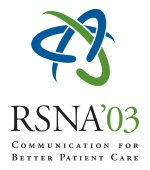Abstract:Purpose/Objective: To test the feasibility of quantification of DSB repair rates directly in freshly harvested peripheral blood mononuclear cells (PBMCs) exposed, ex-vivo, to ionizing radiation, using Pulsed-Field-Gel Electrophoresis (PFGE), combined with quantification of apoptosis induction rate using fluorescence microscopy of the same samples 24 hours later. Our long-term goal is to be able to develop a non-invasive test that would correlate with normal tissue sensitivity to ionizing radiation. Materials/Methods: Three sodium heparin-containing (green-top) tubes of blood were drawn from one of the investigators for each experiment, and PBMCs were isolated in RPMI/density gradients by standard histocompatibility procedures. Within two hours, the PBMCs were exposed to 8 Gy ionizing radiation and prepared for analysis by PFGE at 15-minute intervals to assess DNA damage repair. Damage was determined by quantifying the fraction of broken DNA molecules (2 to 6 megabases) as a percentage of total DNA (Using Southern hybridization and PhosphorImager analysis for quantification). Unirradiated controls were analyzed at each time point for comparison. To determine apoptosis rates, PBMCs exposed to 8 Gy (and unirradiated controls) were placed into RPMI supplemented with 10% fetal calf serum at 37C for analysis 24 hours. We used fluorescence microscopy to quantify percentage of PBMCs with depolarized mitochondria and/or condensed nuclei. Multiple fields were photographed, and the percentage of apoptotic PBMCs determined by counting. All experiments were repeated at least three times. Results: Eight gray resulted in approximately 20% of the DNA being broken into 2 - 6 MB fragments. More than half the DSBs were repaired within 30 minutes. Approximately 40% of the PBMCs were apoptotic 24 hours after exposure to 8 Gy ionizing radiation. Conclusions: Simultaneous and direct quantification of the rate of repair of ex-vivo radiation-induced DNA damage and the percentage of induction of apoptosis in freshly harvested PBMCs is feasible. Potential applications include testing whether this approach can be used to identify individuals at risk of developing severe late reactions to radiation treatment. The hope is that the inter-personal variances in the response of the readily accessible PBMCs to ionizing radiation would correlate with (and predict) responses of the late reacting normal tissues from the same individuals.
Olds MD, T,
Quantification of Radiation-induced DNA Double-strand Break Repair and Apoptosis in Freshly Harvested Peripheral Blood Mononuclear Cells. Radiological Society of North America 2003 Scientific Assembly and Annual Meeting, November 30 - December 5, 2003 ,Chicago IL.
http://archive.rsna.org/2003/3240494.html

